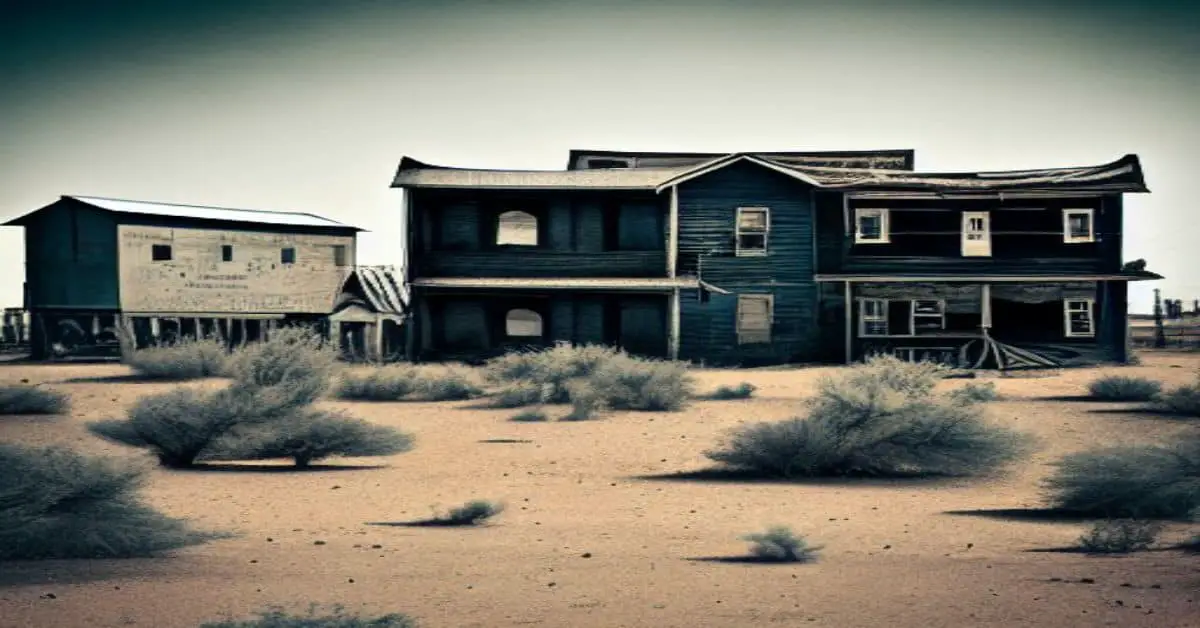Nestled in the rugged mountains of Colorado lies a town that has seen its fair share of history. Bailey, Colorado once a bustling ranch and stage stop in the late 1800s, now stands as a testament to the past.
Its rich history can be seen scattered throughout the town, from the historic park with a train caboose to the Coney Island Hotdog Stand. Visitors exploring Bailey will find themselves transported back in time to a bygone era.
The town’s history is a fascinating tale of growth and decline, hopes and dreams, and the people who made it all possible. Join us as we delve into the captivating story of Bailey, from its humble beginnings as a ranch to its current status as a ghost town.
Key Takeaways
- Bailey, Colorado was established as a ranch in 1864 by Ann and William Bailey, and later became a hub of commerce and industry after the railroad’s arrival.
- The town’s history is celebrated through landmarks and a historical park, and is considered an integral part of the town’s overall history.
- Bailey’s decline has turned it into a “ghost town”, but its fascinating tale of growth and decline, hopes and dreams, and the people who made it all possible still lives on.
- Visitors to Bailey are transported back in time to a bygone era, giving them a glimpse into the rich history of this once-thriving town.
Beginnings as a Ranch
The history of Bailey can be traced back to its origins as a ranch established by Ann and William Bailey in 1864. As early settlers, the Baileys established a ranching life in 19th century Colorado, which included raising cattle, sheep, and horses. They also built a stage station and hotel to accommodate travelers passing through the area.
The Baileys played a significant role in the development of Bailey, as the town grew around their ranch. Their ranch became a hub for the community, attracting settlers and entrepreneurs who saw the potential for growth in the area. With the railroad’s arrival in 1878, Bailey’s population grew, and the town became a bustling hub for the surrounding region.
Despite the changes, the Baileys’ legacy remained an integral part of the town’s history and was celebrated by establishing a historical park that includes scattered buildings and a train caboose.
“In 1864 William Bailey settled in the area, building a ranch, a stagecoach, and later a hotel. The railroad reached the town in 1878, the same year Bailey established its post office.”
https://www.uncovercolorado.com/towns/bailey/
Growth with the Railroad
Upon the railroad’s arrival in 1878, Bailey saw a significant increase in economic activity and population growth. The railroad facilitated the transportation of goods and people, which opened up new opportunities for economic development in the area. As a result, Bailey became a hub of commerce and industry, attracting more settlers to the town.
The impact of the railroad was felt in various aspects of Bailey’s economic development. Here are three ways in which the railroad influenced Bailey’s growth:
- Access to markets: The railroad provided a direct link between Bailey and other towns and cities, allowing for the transportation of goods to and from the area. This made it easier for farmers and ranchers to sell their products beyond the local market, which helped to diversify the town’s economy.
- Tourism: With the arrival of the railroad, Bailey became more accessible to tourists who were looking for new destinations to visit. The town’s scenic beauty and its proximity to Denver made it an attractive location for visitors, leading to the establishment of hotels, restaurants, and other tourist-oriented businesses.
- Employment opportunities: The railroad brought new jobs to Bailey, ranging from construction and maintenance to clerical and administrative positions. This created new employment opportunities for the town’s residents, which helped to boost its economic growth further.
Coney Island Hotdog Stand Arrival
The history of the Coney Island Hotdog Stand is tied to Bailey’s economic development. Originally built as the Coney Island DairyLand in Aspen Park in 1970, it was moved to Bailey to cater to increasing tourists and visitors. The Board Walk of Coney Island was initially built in Denver in 1966, making Coney Island Hotdog Stand a familiar brand to many.
The arrival of the Coney Island Hotdog Stand in Bailey brought in a new source of revenue for the town. It became a popular spot for locals and visitors alike, attracting more people to the area and contributing to the growth of the town’s economy.
Today, the Coney Island Hotdog Stand remains a beloved fixture in the town, serving as a reminder of Bailey’s rich history and its continued growth and development.
Frequently Asked Questions
What led to the decline of Bailey, Colorado as a bustling town?
Bailey’s decline as a bustling town can be attributed to economic factors, such as a decline in industry, jobs, and population, as well as natural disasters like fires, floods, and droughts that affected the town’s infrastructure and resources.
Are there any notable residents or events that occurred in Bailey’s history?
Bailey’s history lacks notable residents and events. The town’s significance lies in its origin as a ranch in 1864, establishing a stage station and hotel, and the arrival of the railroad and post office in 1878.
How did the town get its name?
Bailey is named after Ann and William Bailey, who established a ranch in 1864. The origins and etymology of the town’s name are directly tied to the founders’ surname.
What types of businesses were present in Bailey during its peak?
During its peak, Bailey had a bustling ranching economy and notable landmarks such as a stage station, hotel, and post office. The town’s businesses included a general store, saloon, blacksmith, and lumber mill.
Are any ghost stories or paranormal activity associated with Bailey’s abandoned buildings?
Supernatural sightings and local legends have been reported in Bailey’s abandoned buildings. The historic park’s ghost town status adds to its eerie atmosphere, attracting visitors interested in paranormal activity.


